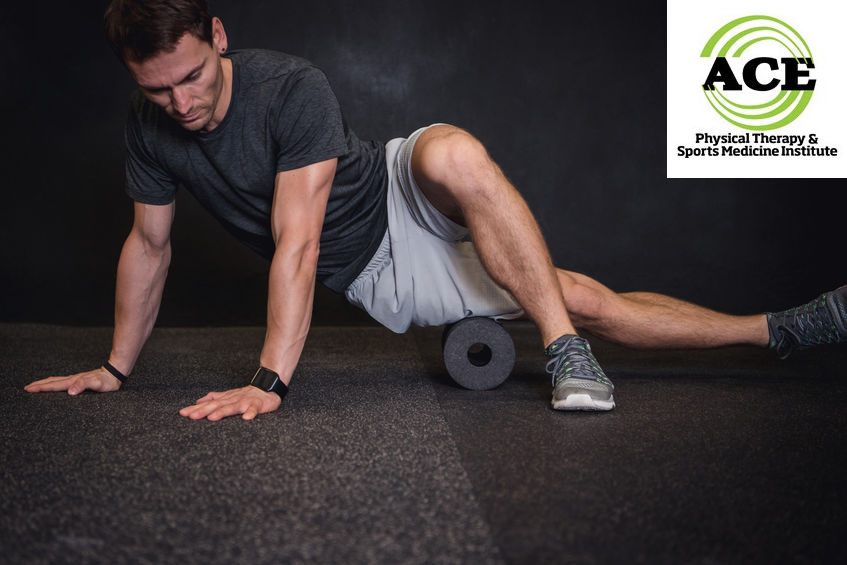COMMON CAUSE OF OUTSIDE KNEE PAIN

Tid Bits of Info
- Approximately 90% of the gluteus maximus inserts into the ITB.
- The most important function of the ITB is stabilization of the hip and knee.
- Foam rolling and stretching cannot “lengthen” the ITB. Instead, the musculature around and under it is effected.
- Humans “develop” a thickening of the lateral and distal portion of the ITB by moving as toddlers and young children.
- Seek the advice and treatment of a Physical Therapist if you develop lateral knee pain
Many people experience a sharp or nagging outside knee pain that can make it difficult to walk and almost impossible to run. Healthcare professionals treat this almost every day. While it has many possible causes, the most common diagnosis is Iliotibial band syndrome (ITband or ITB). Athletes active in running, cycling, hiking, and squats are prone to this condition, but ITband can impact people from all walks of life. A Physical Therapist can assess and offer treatment protocols the patient suffering from outside knee pain due to ITband.
The iliotibial band is a thick, non-elastic “band” of connective soft tissue that course the lateral aspect of the thigh. The ITB and associated muscles act to extend, abduct, and laterally rotate the hip. ITB also contributes to lateral knee stabilization. A problem or dysfunction is a person’s lower extremities such as improper form, lack of strength, poor flexibility, or even improper footwear can lead to lateral or outside knee pain due to Iliotibial band syndrome.
During gait, unilateral stance occurs as a person transitions from one step to the next. When someone is standing on one leg, the pelvis must be held level via an abduction (away from midline) movement of the femur (thigh bone). This action occurs mainly secondary to a forceful contraction of the gluteus medius muscle. If there is a dysfunction of any kind, the ITB might help to produce the abduction of the femur. The additional force produced by the ITB might set off a bad reaction at its attachment sites. During the gait cycle, the most activity of the hip musculature coincides with the largest knee flexion angle. The ITB inserts just distally to the lateral aspect of the knee joint and passes over the small projection of bone on the femur (lateral femoral epicondyle). This is one of the most common sites of lateral knee pain because the ITB can “rub” the epicondyle and cause an inflammatory response to the bone, bursa or ITB.
When the inflammatory process begins, the pain that occurs is usually sharp and stabbing in nature and often times is severe enough to prevent someone from walking without a limp and not being able to run. The healthcare professional should suspect that the ITB is involved when a patient presents with these symptoms. The diagnosis is usually fairly easy to make by the clinical presentation of symptoms and the description of the events that led up to their onset.
The examination of someone that presents with lateral knee pain should include an assessment of strength and range of motion throughout the core and lower extremities. A reduction in strength at the hip or a decrease in range in motion in any joint of the lower extremity can lead to an increase in femoral motion during the gait cycle. In many instances, the femur rotates internally and adducts. This motion coupled with the flexion of the knee joint can increase the amount of compression that occurs with the ITB and lateral femoral epicondyle.

While treatment begins with a focus on reducing the pain by addressing acute symptoms, the long term focus is correcting the problem that led to the symptoms. A Physical Therapist that specializes in orthopaedic injuries can assess the status of core and lower extremity strength and flexibility and develop a program that will correct any inadequacy that exists.
Seeking help and treatment from a Physical Therapist is easy. You do not need a doctor’s prescription for Physical Therapy but your insurance policy might require that you secure a referral for services from your general practitioner.
Distal, lateral knee pain is one of the most common complaints of people who are on their feet extensively or run as a form of cardiovascular exercise. The pain in this area is usually due to inflammation in the area of the insertion of the ITB or at the location of the knee where it courses over the lateral femoral epicondyle. Making sure that the core and lower extremity strength and flexibility are within normal parameters is crucial in the treatment of this condition.
























